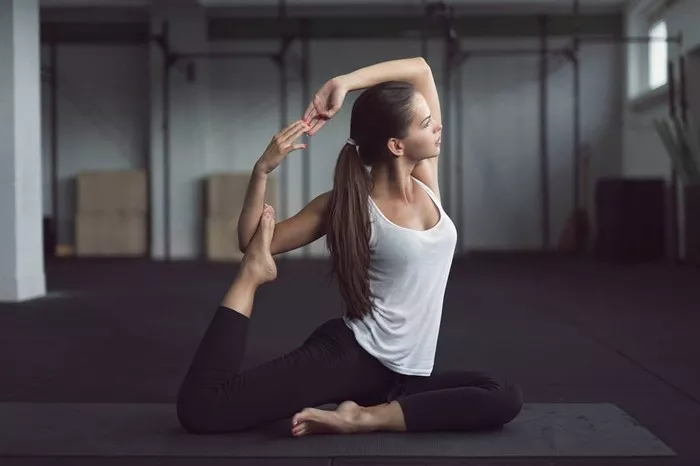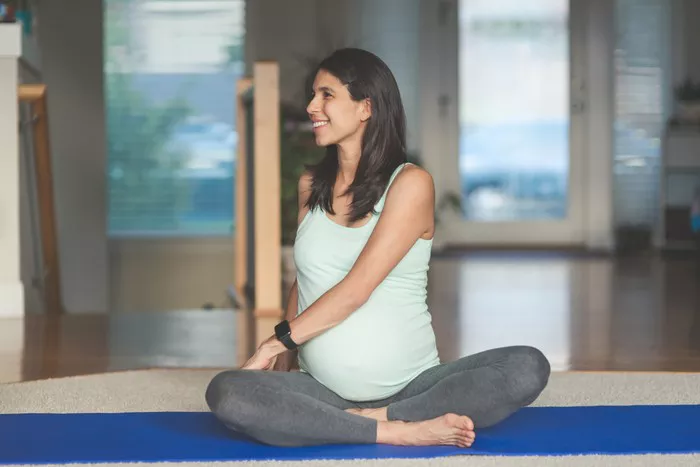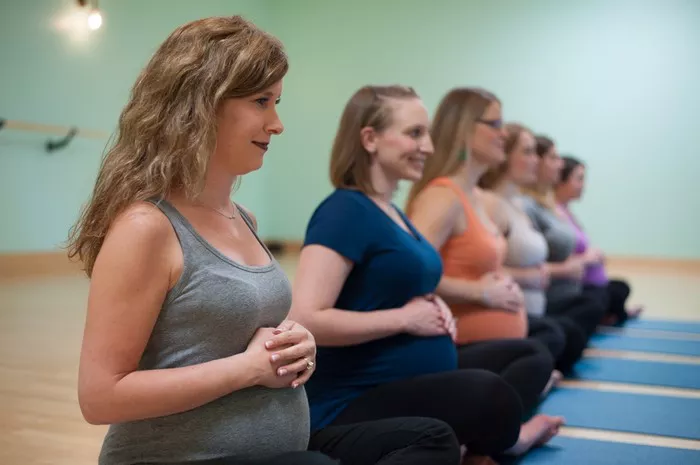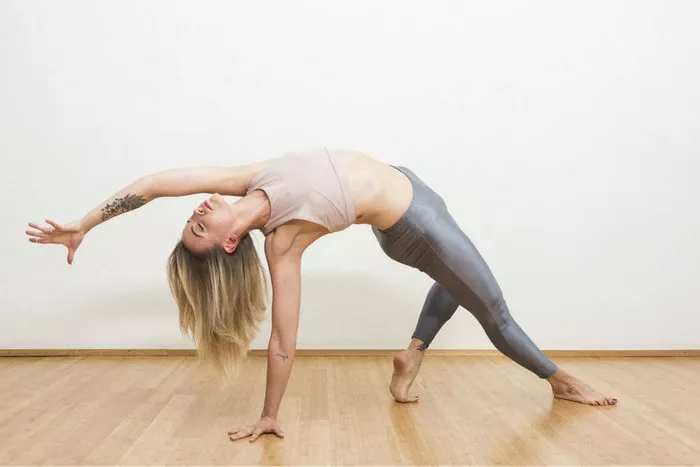Chair yoga is a gentle form of yoga that can be done while sitting on a chair or using a chair for support. It is an ideal practice for people with limited mobility, seniors, individuals recovering from injuries, or anyone who wants a low-impact way to enjoy the benefits of yoga. This guide provides a comprehensive overview of chair yoga, including benefits, step-by-step instructions for various poses, and tips for creating a successful practice.
Understanding Chair Yoga
Chair yoga is a modified version of traditional yoga that allows practitioners to perform poses while seated or standing using a chair for support. This form of yoga makes the practice accessible to those who may have physical limitations or balance issues.
The core principles of yoga—breath awareness, mindfulness, and alignment—remain central in chair yoga. Despite the modifications, chair yoga can improve flexibility, strength, and mental well-being. It is often practiced in community centers, senior homes, and wellness clinics, and has gained popularity for its adaptability and safety.
Benefits of Chair Yoga
Chair yoga offers numerous benefits that extend beyond physical health. Some of the most significant advantages include:
- Improved Flexibility: Regular practice helps loosen tight muscles and joints.
- Enhanced Strength: Many poses engage the core and limbs, increasing overall body strength.
- Better Posture: Focus on alignment helps to correct and maintain good posture.
- Stress Reduction: Mindful breathing and gentle movement reduce anxiety and stress.
- Increased Circulation: Gentle movement helps stimulate blood flow throughout the body.
- Pain Relief: People with arthritis or chronic pain often find relief through modified yoga poses.
Preparing for Chair Yoga
Before beginning chair yoga, it is important to prepare your space and body properly:
- Choose the Right Chair: Use a sturdy, armless chair placed on a non-slip surface.
- Wear Comfortable Clothing: Loose, stretchy fabrics allow for free movement.
- Hydrate: Drink water before and after your practice.
- Clear Your Space: Make sure there is enough room to move arms and legs without obstruction.
- Warm Up: Begin with gentle neck rolls and shoulder shrugs to prepare the body.
Basic Chair Yoga Poses
Below are several foundational chair yoga poses suitable for beginners and experienced practitioners alike:
1. Seated Mountain Pose (Tadasana)
Sit up straight with your feet flat on the floor, knees bent at a 90-degree angle. Rest your hands on your thighs. Inhale and lengthen your spine, lifting your chest. Keep your shoulders relaxed and gaze forward. This pose sets the tone for the rest of your practice.
2. Seated Cat-Cow Stretch
- Cat Pose: Exhale and round your spine, tucking your chin to your chest.
- Cow Pose: Inhale and arch your back, lifting your chest and looking up.
Repeat 5-10 times. This sequence increases spinal flexibility and warms up the back.
3. Seated Forward Bend
Inhale and raise your arms overhead. Exhale and hinge at the hips to fold forward, bringing your hands toward the floor or your ankles. Let your head relax. This stretch helps release tension in the lower back and hamstrings.
4. Seated Twist
Place your right hand on the back of the chair and your left hand on your right thigh. Inhale and lengthen the spine. Exhale and twist to the right. Hold for 3-5 breaths, then repeat on the left side. Twisting improves spinal mobility and aids digestion.
5. Seated Side Bend
Raise your right arm overhead, keeping your left hand on the chair for support. Gently lean to the left, stretching the side body. Hold for a few breaths and repeat on the opposite side. This pose improves flexibility in the torso.
6. Seated Pigeon Pose
Place your right ankle on your left knee. Keep your back straight and lean forward slightly to deepen the stretch. Hold for several breaths. Switch sides. This pose opens the hips and relieves lower back tension.
7. Seated Warrior I
Sit sideways on the chair, right leg extended back and left foot flat on the ground. Raise your arms overhead and keep your chest lifted. Hold for 3-5 breaths. Switch sides. This pose strengthens legs and improves balance.
8. Seated Leg Extensions
Extend one leg straight in front of you, flexing your foot. Hold for a few seconds and lower it back down. Repeat 10 times on each leg. This strengthens the quadriceps and improves circulation.
9. Ankle Rolls
Lift one foot off the floor and slowly rotate your ankle in both directions. Repeat on the other side. This simple movement improves joint mobility and prevents stiffness.
10. Seated Relaxation (Savasana)
Sit back in your chair, close your eyes, and rest your hands on your lap. Breathe deeply and allow your body to relax completely. Spend at least 5 minutes in this pose to absorb the benefits of your practice.
Intermediate Chair Yoga Poses
For those who are more comfortable with the basics, intermediate poses offer a deeper challenge:
1. Chair Sun Salutation
A modified sun salutation can be done entirely in a chair:
- Inhale: Raise arms overhead.
- Exhale: Fold forward.
- Inhale: Half-lift with hands on shins or knees.
- Exhale: Forward fold again.
- Inhale: Rise with arms overhead.
- Exhale: Return to starting position.
This flowing sequence builds warmth and energizes the body.
2. Seated Eagle Arms
Wrap your right arm under the left and bring the palms together if possible. Lift elbows and hold. This pose strengthens the shoulders and upper back. Repeat on the opposite side.
3. Chair Plank
Place your hands on the seat of the chair, step back into a diagonal line, engaging your core. Hold for 20-30 seconds. This pose strengthens the core and upper body.
4. Standing Chair Support Poses
With the chair for balance, try standing poses like:
- Tree Pose: Place one foot on the ankle or calf of the opposite leg.
- Warrior II: Stand sideways with one leg forward and arms extended.
- Standing Forward Bend: Hold the back of the chair while bending forward.
These poses build strength and improve balance while maintaining the support of the chair.
Tips for a Safe and Effective Practice
To make the most of your chair yoga routine, consider the following tips:
- Listen to Your Body: Never force a movement. Stop if you feel pain.
- Move with the Breath: Coordinate each movement with an inhale or exhale.
- Practice Regularly: Consistency leads to better results.
- Modify When Needed: Use props like yoga blocks or cushions for additional support.
- Stay Hydrated: Drink water before and after your session.
Who Should Try Chair Yoga?
Chair yoga is suitable for a wide range of people:
- Seniors: It offers a gentle way to stay active.
- Office Workers: Quick chair yoga breaks can reduce stress and improve posture.
- People with Disabilities: Adaptable poses make yoga accessible.
- Post-Surgery Patients: It allows movement without putting strain on the body.
- Beginners: A perfect introduction to yoga without intimidation.
Creating a Chair Yoga Routine
To build a well-rounded chair yoga routine, follow these guidelines:
- Warm-Up: Begin with 5 minutes of gentle stretches.
- Core Poses: Select 5-7 poses targeting different areas of the body.
- Balance Work: Include at least one standing or dynamic pose.
- Cool Down: End with a twist, forward bend, and savasana.
- Duration: Aim for 20-30 minutes per session, 3-5 times per week.
Conclusion
Chair yoga is a powerful tool for enhancing physical and mental well-being, especially for those who face challenges with traditional yoga forms. With its accessibility, simplicity, and numerous health benefits, chair yoga has rightfully earned its place in the wellness routines of people around the world. By incorporating these poses and tips into your practice, you can enjoy a safe, effective, and deeply rewarding yoga journey right from your chair.
Related Topics:



















